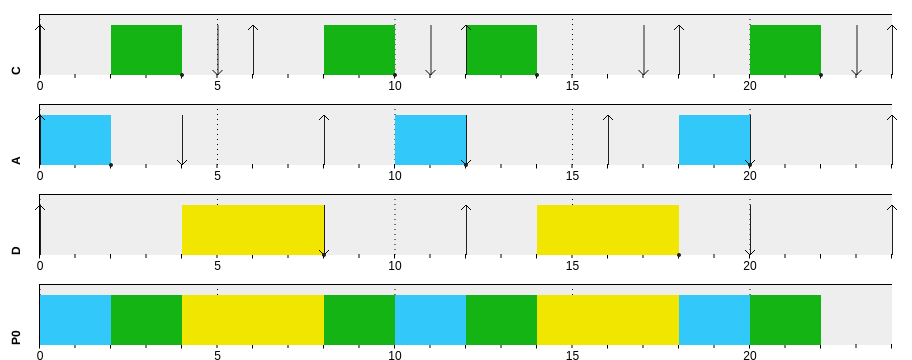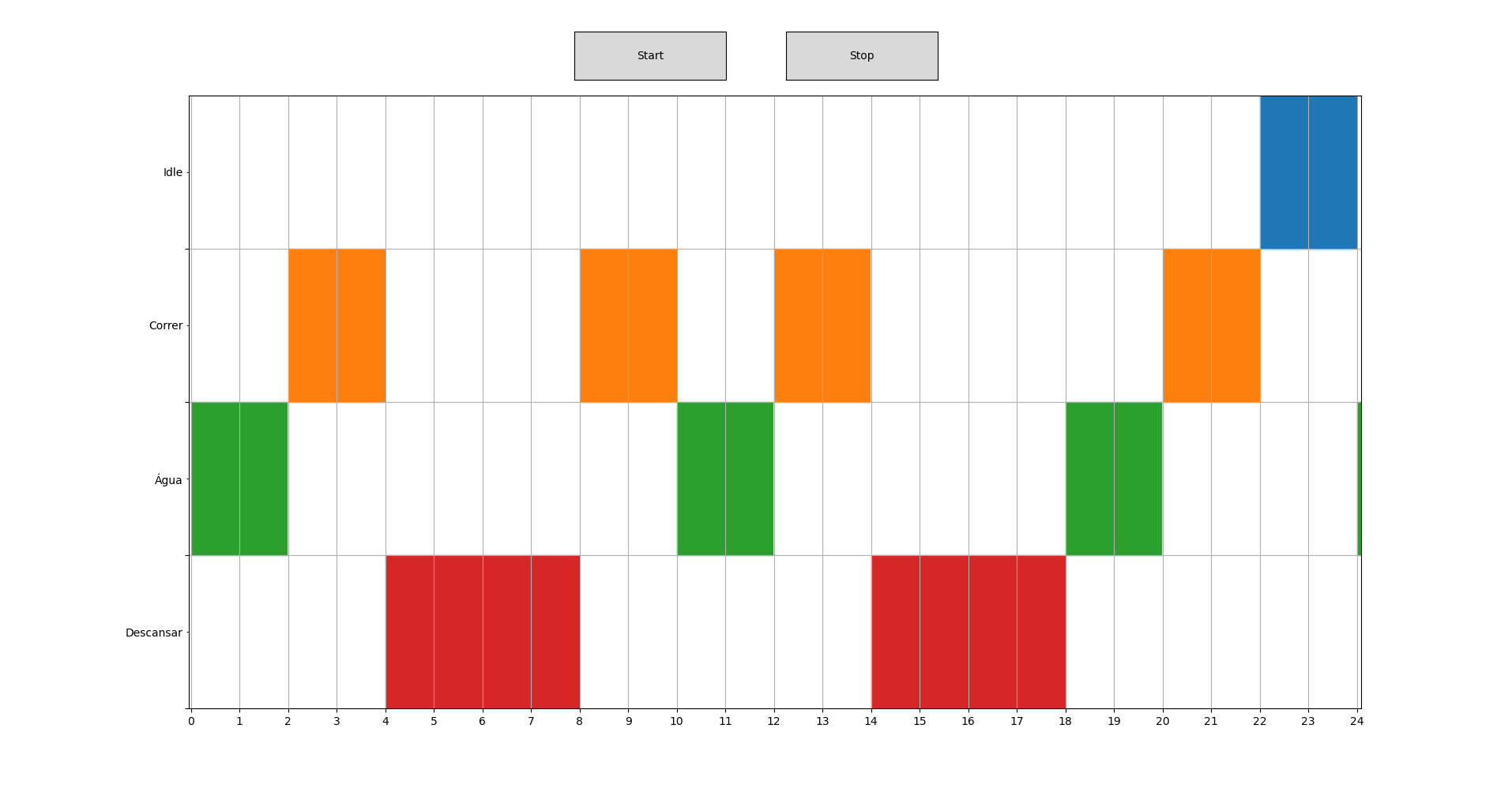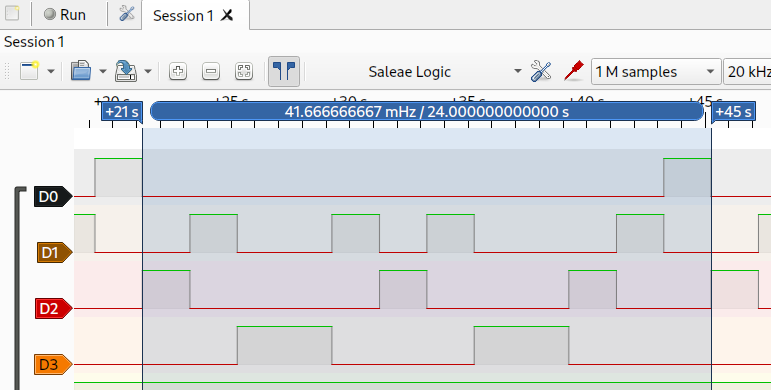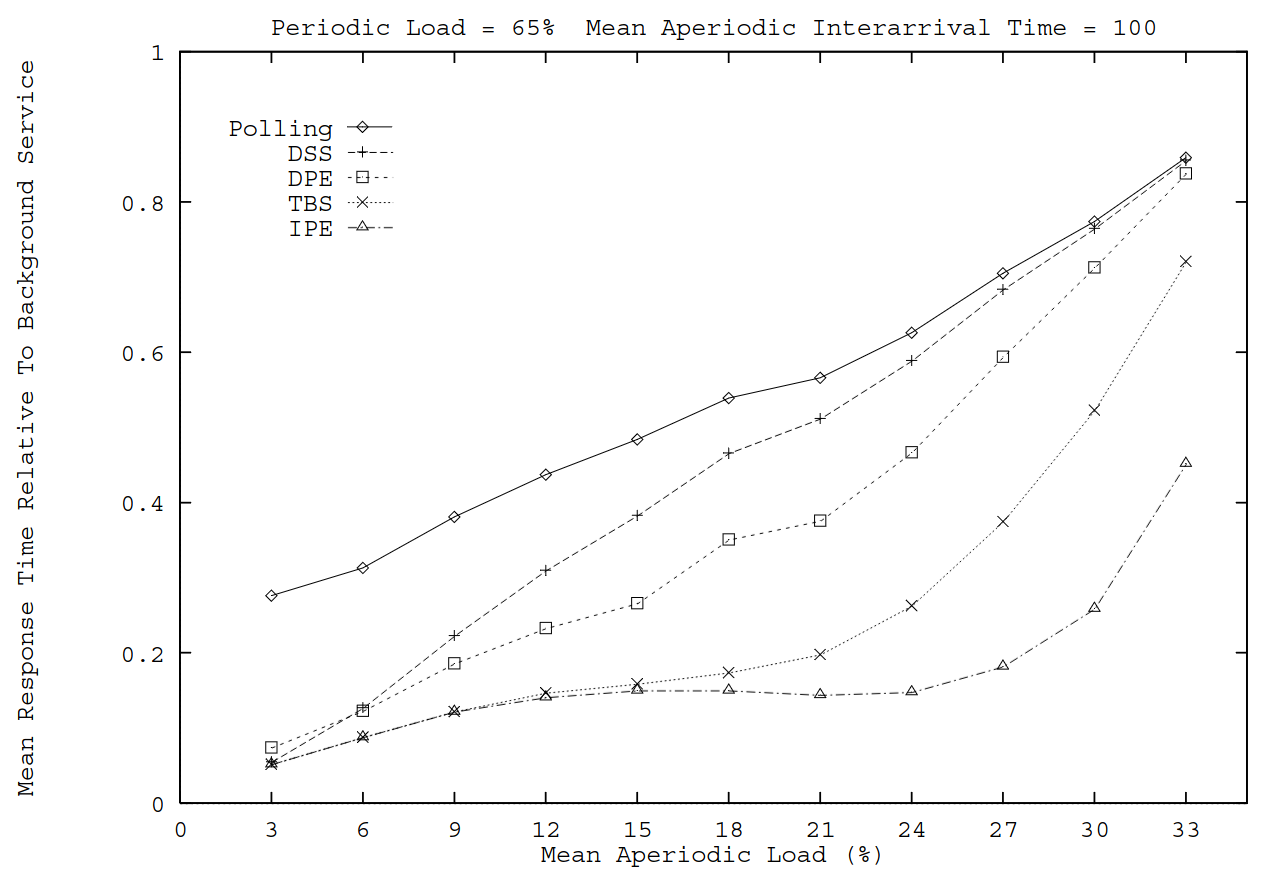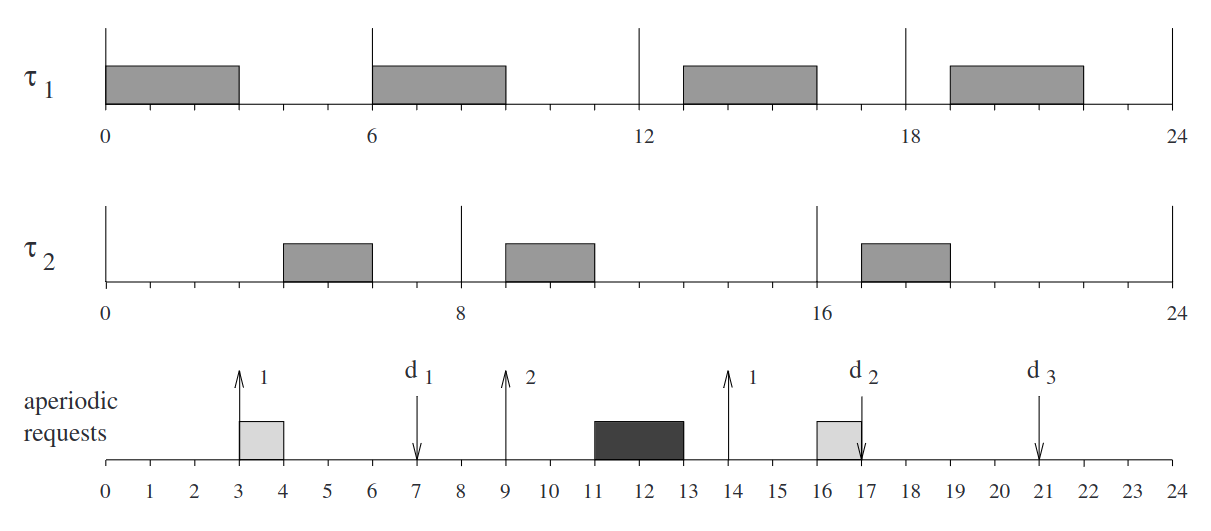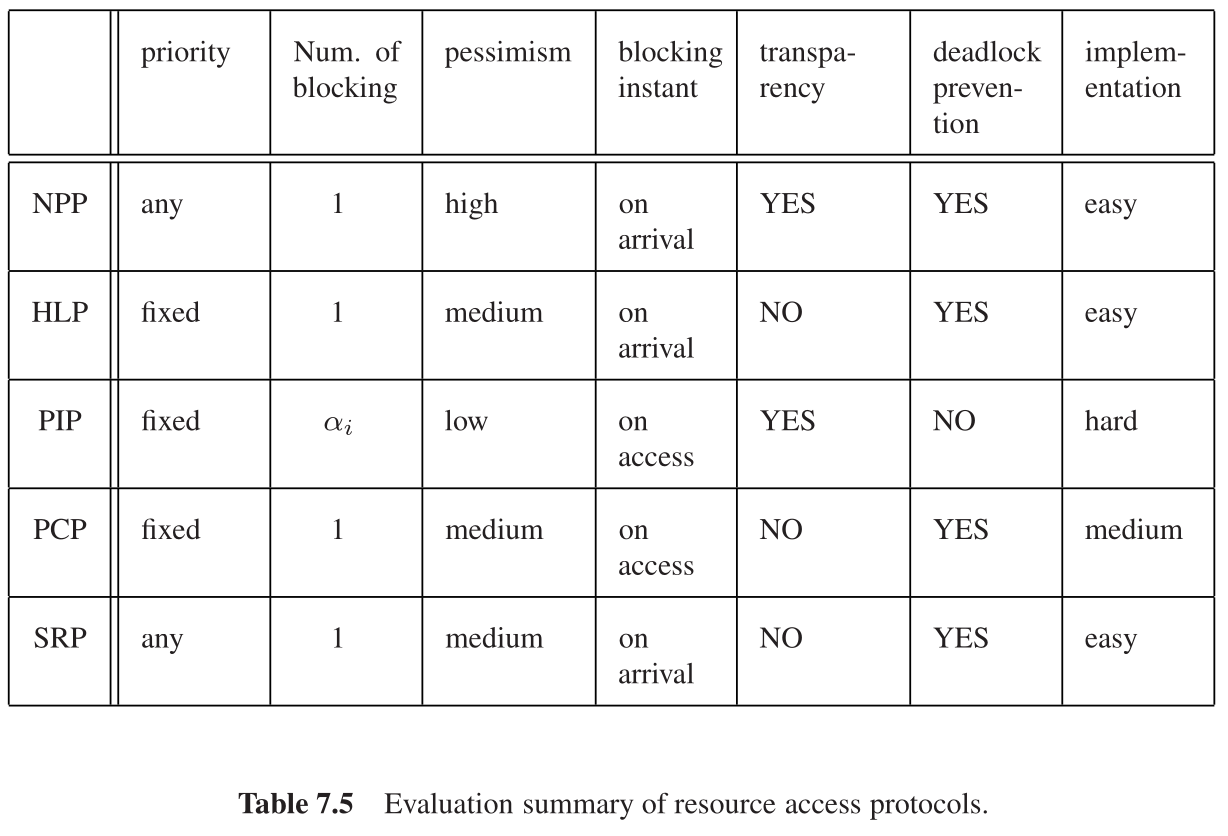Note
Subject is over. This project will no longer be maintained.
This project contains a heavily modified version of MiROS that uses an EDF (Earliest Deadline First) scheduler. Given the choice to implement a Rate Monotonic, Deadline Monotonic or EDF scheduler, the EDF was chosen for it's expandability and ease of implementation.
It has support for periodic tasks with specific deadlines and aperiodic tasks using a Total Bandwidth Server.
This project also contains a tracer in tools/tracer.py. Using matplotlib and pyserial, it's possible to visualize when and for how long each thread is executing.
It's necessary to adjust the traceds list in the Python script based on your task set and define OS_DEBUG_USART when compiling.
There's also the possibility to use an oscilloscope or a logic analyzer to debug your tasks. Make sure to set the define OS_DEBUG_GPIO, and then hook up your probes to each thread's debug pin. The debug pins reside in GPIO A, and their number is the threads ID (0 for the idle thread, 1 for the server thread, and then assigned incrementally for each configured thread).
The working principle is the global tick counter os_ticks and the activation_time variable contained in each task's TCB (Thread Control Block). This structure was chosen because if the activation_time is in the future, the task has not yet been activated; if it's in the past, the thread is active and its absolute deadline can be calculated by adding relative_deadline to the activation_time; thus making it simple to calculate everything the scheduler needs.
Having each active thread's absolute deadline, when the scheduler is called, it searches for the earliest one, and switches to it. Upon terminating execution, the task period is added to its activation_time.
The following task set:
| Task | Computation Time | Deadline | Period |
|---|---|---|---|
| Correr | 2 | 5 | 6 |
| Água | 2 | 4 | 8 |
| Descanso | 4 | 8 | 12 |
SimSo yields the following results:
And after being run on this operating system, this is the output from tracer.py:
And this is the output from PulseView, a logic analyzer:
Many aperiodic servers were researched in order to add this capability to the operating system. Given that EDF is used to schedule the periodic tasks, a dynamic priority server must be used. The following servers were considered: Dynamic Priority Exchange, Dynamic Sporadic, Total Bandwidth, Earliest Deadline Late and Improved Priority Exchange.
The Total Bandwidth Server was chosen because it's simple and elegant to implement, and it's able to achieve near-optimality, only losing to the Improved Priority Exchange Server.
It works by assigning an absolute deadline
where
To actually make this a Total Bandwidth Server,
Given the following task set:
| Task | Computation time | Deadline | Period |
|---|---|---|---|
| Task 1 | 3 | 3 | 3 |
| Task 2 | 2 | 2 | 2 |
And a Total Bandwidth Server with bandwidth
And, after running and debugging, this was the output from PulseView:
Matching perfectly.
Buttazzo shows a table containing a summary and comparison of different resource access protocols
Given my personal time constraints during the development of this operating system and high concurrent demands in my life at the time, unfortunately I had to choose the simplest protocol, the Non-Preemptive Protocol (NPP).
The NPP works by prohibiting a task from being preempted while it's executing a critical section. In practice, it does that by either raising the priority of the executing task to the highest priority level or disabling interrupts altogether. The latter approach was chosen for this project.
The interrupt control happens in the semaphore_wait and semaphore_signal function. Note that with this configuration, it is impossible to have nested critical sections.
The final demonstrator consists on a control system with 3 tasks, one to measure, one to calculate and one to actuate. They were designed with the deadline equal to the period, with the following parameters:
| Task | Computation Time (ms) | Period (ms) |
|---|---|---|
| Measure | 10 | 50 |
| Calculate | 25 | 50 |
| Actuate | 5 | 50 |
As each task needs a value from the previous task, they all share the same period, which is the rate at which the sensor is able to provide us with data. The actuate task just sets a register, so it has a very short computation time. The measurement task has to wait for the sensor to provide it with data, so it has a longer computation time. The calculate task was originally planned to do soft floating-point operations, so it has the longest period. The latest solution uses integer arithmetic, so such a long period is not necessary, however, it still works and still fits, so it was kept.
There are four semaphores (representing two producer-consumer pairs) to make sure the flow of information through the tasks is consistent.
A Total Bandwith Server was used to serve a very fast (1 ms computation time) aperiodic task that changes the reference value of the controller. The calculated
I2C and VL53L0X libraries were taken from GitHub user MarcelMG. [2] [3]
You need make, arm-none-eabi-gcc, and openocd to build and flash this project. The Makefile has a monitor target, that by defaults uses GNU Screen to monitor the serial port.
- Giorgio C. Buttazzo. 2011. Hard Real-Time Computing Systems: Predictable Scheduling Algorithms and Applications (3rd. ed.). Springer Publishing Company, Incorporated.
- G M. M. STM32F103C8T6. Available on: https://github.com/MarcelMG/STM32F103C8T6/tree/master/I2C1
- G M. M. VL53L0X C library for STM32F103. Available on: https://github.com/MarcelMG/VL53L0X-STM32F103
